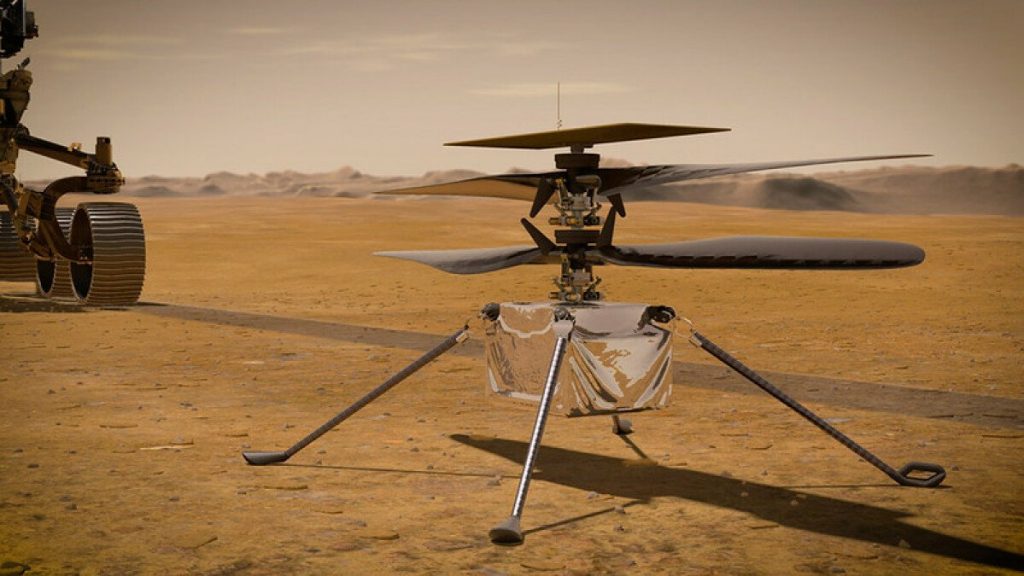
NASA’s tenacious drone sweeps over Mars in farthest flight yet (Image Credit: Mashable)
The little Martian helicopter-that-could has done it again.
Ingenuity, a small 4-pound robotic scout that hitched a ride to the Red Planet last year, has recently sent back video documentation of its farthest and fastest flight yet. On April 8, it traveled 2,310 feet — a bit less than half a mile — at 12 mph.
The helicopter’s black-and-white navigation camera caught the excursion, showing a rare, bird’s eye view of the Martian terrain. Ingenuity’s camera is downward-facing, offering a “breathtaking sense of what it would feel like gliding 33 feet above the surface of Mars,” said NASA Ingenuity team leader Teddy Tzanetos in a statement.
In the video, Ingenuity soars through Mars’ thin atmosphere over rippling sand, then midway through the journey, the landscape changes to disparate rocky fields. The helicopter eventually flies over a flat area, where it drops down for a smooth landing.
The whole record-breaking feat lasted a little over 2.5 minutes, but that’s much longer than its first flight of 39 seconds in the spring of 2021. NASA increased the new video’s speed fivefold, reducing its runtime to less than 35 seconds.
-
Mars’ sky gets a mysterious green aurora resembling a giant worm
-
Mars rover rumbles by crashed artifacts in the Martian desert
Ingenuity’s autonomous flights 300 million miles from Earth are programmed by engineers at NASA’s Jet Propulsion Laboratory in Southern California. Those plans are sent as commands to the car-size Perseverance Mars rover, which then relays them to the helicopter. While Ingenuity flies, sensors onboard the aircraft react to the landscape to help guide it.
The helicopter has wildly outperformed NASA’s expectations. Engineers wanted to prove they could fly a drone on Mars. Now, Ingenuity has flown at least 28 times while exploring the desertlike planet.
Mission control recently lost contact with Ingenuity while the helicopter went into a power-conserving mode. Communication was restored after its solar panels recharged the aircraft’s six lithium-ion batteries.





